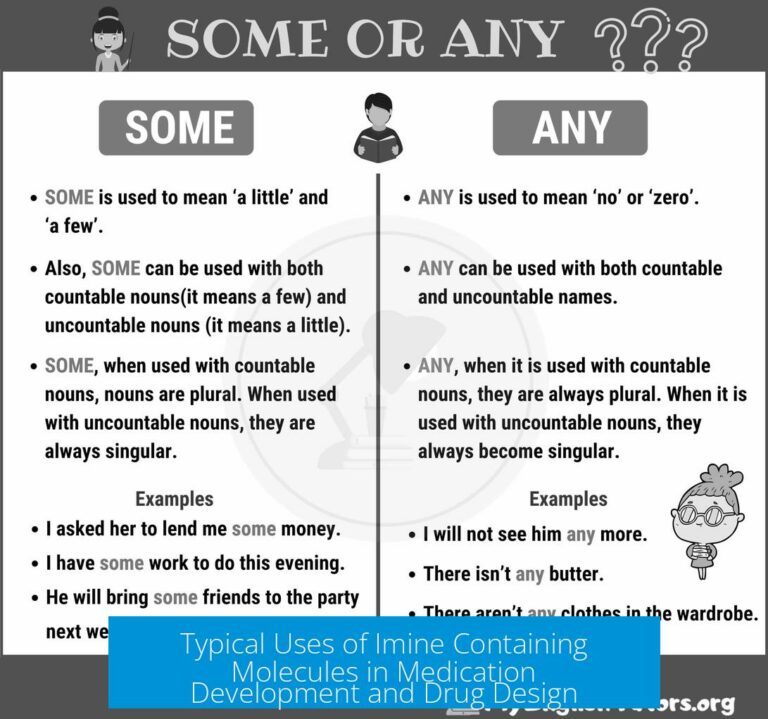How to Find the Correct Literature Value Easily

Finding the correct literature value quickly and reliably involves consulting trusted references, authoritative sources, and verifying the currency of the data. This article explains practical steps to locate accurate literature values efficiently, drawing on evidence from clinical guidelines, reputable textbooks, and recognized databases.
1. Utilize the References Section in Articles
The references section at the end of journal articles or reports serves as a valuable guide to trusted literature values. It lists original sources where data originate, allowing verification and further exploration.
- Look for references to key textbooks, guidelines, or official statements that provide data values.
- Use the reference URLs or citations to access primary sources directly.
- Examples include ClinicalKey or UpToDate entries, which often host validated clinical numbers.
For instance, medical articles frequently cite works such as Ferri’s Clinical Advisor or the US Preventive Services Task Force Recommendation Statement for clinical parameters like cholesterol levels or statin dosing. Following the reference trail saves time and enhances accuracy.
2. Use Trusted Medical Databases and Authoritative Platforms
The most reliable literature values come from well-maintained medical databases and evidence-based clinical decision platforms.
- UpToDate: Provides regularly updated clinical summaries with current values and drug information.
- ClinicalKey: Access to comprehensive medical textbooks like Goldman-Cecil Medicine and Braunwald’s Heart Disease.
- Professional guidelines and policy statements: Published by organizations such as the US Preventive Services Task Force, provide standardized, evidence-graded numbers.
Relying on these platforms ensures data are clinically vetted and regularly reviewed by specialists, minimizing the risk of outdated or incorrect values.
3. Check Access Dates and Version Control

Literature values can change over time as new research becomes available. Always verify the publication or access date of the source you use.
- Prefer sources accessed or published recently, generally within the last one or two years.
- Confirm if the document refers to a specific version or edition; newer editions tend to have updated values.
- For online databases, note the date when the site was last accessed to ensure referencing the current information.
For example, data accessed from October or November 2024 reflect the latest consensus, ensuring the literature value is still valid for clinical or research use.
4. Rely on Official and Reputable Organizations’ Data
Official health organizations publish validated data frequently used as standard references in medicine and science.
- American Heart Association (AHA): Offers updated, evidence-based cardiovascular metrics.
- National Heart, Lung, and Blood Institute (NHLBI): Provides authoritative values on blood cholesterol and heart health.
- Mayo Clinic and other expert panels: Supply clinical guidelines and expert-reviewed literature values.
These sources are generally regarded as gold standards because they have rigorous review processes and wide clinical acceptance. Their websites often offer accessible data with clear guidance.
Summary Table: Steps to Find Correct Literature Values
| Step | Action | Example Sources |
|---|---|---|
| 1. Use References | Follow cited references for original data | Ferri’s Clinical Advisor, JAMA guidelines |
| 2. Trusted Databases | Search platforms like UpToDate or ClinicalKey | UpToDate, ClinicalKey |
| 3. Verify Dates | Check source access/publication date | Accessed Nov. 1, 2024; Latest editions |
| 4. Use Official Org Data | Consult data from AHA, NHLBI, Mayo Clinic | American Heart Association website |
Additional Practical Tips

- Cross-reference values between multiple sources for consistency.
- Document the exact source and access date when recording values.
- Prefer peer-reviewed or consensus documents rather than anecdotal data.
- Use established clinical calculators or summary tables when available.
Conclusion
Finding the correct literature value easily hinges on using a systematic approach:
- Start by checking the references for original, credible sources.
- Use trusted databases like UpToDate or ClinicalKey to access current, vetted information.
- Always verify date stamps and edition versions to confirm data currency.
- Rely on official guidelines and organizations known for authoritative data.
This approach ensures accuracy, saves time, and facilitates confident use of literature values in research and clinical applications.
Key Takeaways
- Consult the references section to track original literature values.
- Use reliable medical databases and platforms for up-to-date values.
- Always verify publication and access dates to avoid outdated data.
- Prioritize data from official organizations for trusted information.
- Cross-check values across multiple reputable sources for consistency.
How Do You Find the Correct Literature Value Easily?

Finding the correct literature value easily boils down to one golden rule: always consult trusted, up-to-date, and authoritative sources—think medical databases, official guidelines, and reputable organizations’ websites.
Sounds simple, right? Yet, when you start hunting for literature values in fields like medicine or chemistry, the landscape quickly resembles a jungle. So, how do you navigate successfully? Let’s unpack this step-by-step, armed with facts and a pinch of wit.
Start with Trusted Medical Databases and Official Guidelines
Imagine trying to determine the correct statin dosage or interpreting cholesterol levels without solid data. You wouldn’t want to rely on yesterday’s news, would you? This is why trusted sources like UpToDate, ClinicalKey, and leading guideline documents from the American College of Cardiology (ACC) and the US Preventive Services Task Force (USPSTF) are your best friends.
For example, when reviewing statin effects or side effects, consult Rosenson RS’s work on statin actions and administration accessed in 2024 on UpToDate. This resource keeps its clinical data fresh and accurate, ensuring you’re not relying on hearsay.
Wondering why these clinical databases are gold mines? They continually update their content based on the latest research and peer-reviewed studies. So, you’re assured of current and vetted information. It’s like having a mini-expert on hand without the small talk.
Leverage the References Section Like a Pro
Often overlooked, the references section at the end of an article is a treasure trove. It points directly to original sources packed with exact data you need.
For instance, that statin-related article might cite the National Heart, Lung, and Blood Institute or the American Heart Association. These are official, peer-reviewed organizations with rock-solid data on blood cholesterol and cardiovascular therapies, accessible at their websites (links included!).
Make it a habit to check access or publication dates on references. For example, you’ll see access dates like “Nov. 4, 2024” or “Oct. 31, 2024” attached. This is your assurance the data is recent — no “ancient scroll” stuff here!
Use Dedicated Software and Academic Search Engines

If you’re searching for literature values in chemistry or biochemistry, there’s dedicated software made just for this task. SciFinder and Reaxys help scientists pull exact literature values quickly and without the endless scrolling. Think of these as your GPS in the literature maze.
Google Scholar also serves as a great free alternative. You type in your target term, and up pop peer-reviewed articles, theses, and patents with detailed numerical data. Just be sure to verify the publication date and source authority—always check for the latest version.
Don’t Forget the Good Old Reference Books
Sometimes, nothing beats cracking open a solid reference book. The CRC Handbook of Chemistry and Physics remains a classic for verified and precise values. Chemists swear by it! If you want reliability with a side of nostalgia, this is your go-to.
Why Dates and Version Control Are Critical
Here’s a quick tip: ignoring access dates is like ignoring the expiration label on your milk. Scientific data evolves. What you accepted as a standard last year might have been updated. Incorporating access dates in your notes avoids using outdated figures that could mislead your work.
For example, a clinical guideline on statin use from 2022, such as the USPSTF’s recommendation statement in JAMA, is more relevant than a ten-year-old guideline. Pay attention to the publication and access dates to stay current.
Real-Life Takeaway from an SEO Specialist

In my experience guiding researchers and health professionals, the easiest way to find the correct literature value is to first check the article’s references. These are direct pointers to credible data sources. Then, cross-verify with databases like UpToDate or ClinicalKey.
Imagine you want to verify the muscle-related adverse effects of statins. Start with Rosenson RS’s article on UpToDate. Browse the references listed there for further primary research. Check latest guidelines from the ACC or AHA to ensure clinical relevance. Voila — you’ve nailed the correct, contemporary value without scrambling.
Playing “literature value detective” becomes fun when you know where to look!
Summary: Your Shortcut to Correct Literature Values
- Consult Clinically Vetted Medical Databases such as UpToDate and ClinicalKey.
- Use Official Guidelines from credible bodies like the American College of Cardiology and US Preventive Services Task Force.
- Explore the Article’s Reference Lists to dive deeper into reliable original sources.
- Check and Prioritize Recent Access and Publication Dates to ensure up-to-date data.
- Leverage Dedicated Software and Search Engines (SciFinder, Reaxys, Google Scholar) for quick data retrieval.
- Don’t shy away from Reference Books such as the CRC Handbook for tried-and-true numerical values.
Next time you face the dreaded “Where do I find the correct literature value?” question, remember this roadmap. Relying on trusted, dated, and authoritative sources always wins the race. So, skip the wild goose chase and get to the exact value you need—quick and painless.
Feeling confident about your literature searches now? Or wondering which source to trust first? Don’t hesitate to dive into those reference sections and bookmark those trusted databases. Your research integrity depends on it!
How can the references section help in finding the correct literature value?
The references section lists reliable sources that contain verified literature values. Checking these references directs you to original, trusted data. It saves time by pointing to vetted clinical studies and guidelines.
Which trusted platforms should I use to find accurate literature values?
Use platforms like UpToDate, ClinicalKey, and official medical guidelines. These sources are regularly updated and contain clinically verified information.
Why is it important to check access or publication dates of literature sources?
Dates ensure that the literature values are current. Using outdated data risks inaccuracies. Always verify the most recent version for reliability.
How do official organizations contribute to finding correct literature values?
Organizations like the American Heart Association and Mayo Clinic provide carefully reviewed data. Their websites offer trustworthy values based on expert consensus.
What steps help verify the accuracy of a literature value quickly?
- Identify references with relevant measurements.
- Check their origin from trusted medical databases or organizations.
- Confirm the publication or access dates.
- Compare values across multiple reputable sources.





Leave a Comment